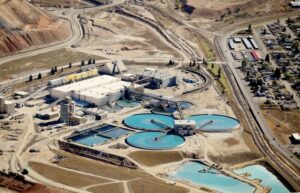Mines consume considerably less than other industries (5%, compared to industry’s 7% and agriculture’s 61% – CSIR). Yet water is vital for mining operations, and mines realise substantial benefits when they make their water operations more efficient.
For example, mines that use dry separation report using up to 40 percent less water per unit of mineral production. Modern water technologies are a rich source for efficiencies, including lower power consumption from energy-efficient pumps, better environmental monitoring of discharged water, and improved productivity and lower costs through strategic dewatering and water reuse. When mines strategically combine water technologies, they receive many benefits in return. Xylem calls this approach “Industrial-Strength Thinking”: water management strategies that can incorporate dewatering, fire protection, pipeline inspection, water reuse, environmental monitoring and more. Yet every strategy will differ from site to site. What are your options? Every mine is unique, so how can you discover the best options for your site? To help find answers, Xylem developed a virtual interactive tour of mine-focused water solutions.The Xylem Virtual Experience is a great way to explore options from the comfort of your browser. Visit the experience, delve into different site areas, access case studies, and consider Xylem’s various solutions. The Xylem Virtual Experience covers numerous essential aspects of a mining site, including:
- Dewatering: Clear water from open pits and underground areas with vertical turbine pumps, multistage ring section pumps, submersible pumps, pump controls and specialised generators.
- Dust Suppression: Contain dust on trucks and tailings piles with single-stage, double suction centrifugal pumps, stainless steel vertical multistage pumps, and their control equipment.
- Wastewater and recycling: Get more out of used water and reduce environmental impact with ozone oxidation systems, adaptive submersible mixers, hydraulic submersible pumps, and water quality monitoring.
- Heat transfer: Manage water temperature and pressure through heat exchangers, high-pressure multistage pumps and proactive monitoring systems.
- Environmental monitoring: Reduce environmental impact and comply with regulations through portable water quality instruments, water quality monitoring, and remote data access.
- Water boosting: Move water from lower levels using portable self-priming pumps, multistage booster pumps, and wireless pump controls.








